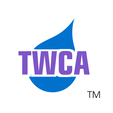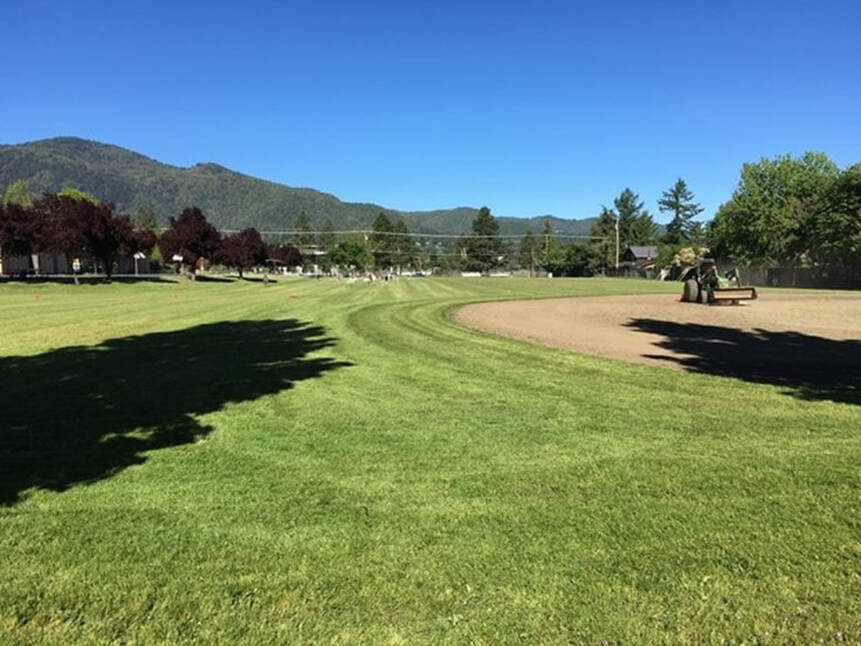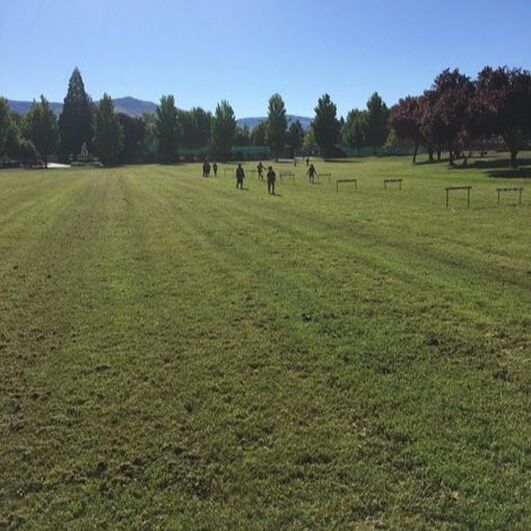When Walker was proposed as a HTHK site, the fields were unused; the lumpy, hardpan surface made it unsafe for children to play on. The groundcover was primarily annual grasses and a few persistent broadleaf weeds. Two little league diamonds sat dejectedly at either end, unused, knotweed slowly covering the degraded granite surface of the infield diamond. Ashland was gripped by drought for consecutive years and water to the field had been shut off. It was a perfect site for regreening. Julie coordinated meetings with the Ashland School District Head of Maintenance, Gary Sisk, and the districts Sport Field Manager, Dave Sommer, to talk about the fields and options for renovation. During the conversation, it came up that herbicides were frowned upon in the community and the district would not want to spray out the existing vegetation. They were willing, however, to plough out the field, drag it level, pulling out most of the weeds, and fracture seed the field for establishment. TWCA’s next meeting was with the Walker Elementary PTO to get feedback and buy-in from the school community. After some discussion about process, timing, and drought tolerance; coupled with assurances that the district would not be spraying herbicides to establish the new fields, the PTO was on board. TWCA’s final plan for the field included an initial establishment and two years of overseeding to ensure good turf establishment and maximize the success of drought tolerant turf in a difficult environment. By the time the stakeholders had been involved, the plan had been revised and the Ashland School District had agreed to do most of the heavy lifting, it was too late in the year for establishment. The plan would have to wait for another year. As Ashland’s drought broke in WY 2016, there was some concern that waiting until the fall of 2016 would only serve to give a better foothold to the weed pressures already on the fields. The argument against spring establishment was that it would require watering for establishment through the summer and this heavy watering schedule, on the tail end of harsh drought conditions and facing an uncertain summer could give both the city and the school district black eyes. Ultimately, the project waited until the sweet spot before the start of school but after the heat of summer had started to ebb. By September TWCA had also brought Ashland Little League into the project. Little League provided all the volunteers for rock and trash pick-up on the field the night prior to seeding. With the fields ploughed, drug, picked, and cleaned, seeding could take place.
Sommer who did the initial field preparation as sport field manager for Ashland School district is committed to the long-term success of the project with plans for core aeration, a rigorous fertility program, and overseeding with TWCA qualified seed in September of 2017 and again in 2018. He also noted how the improvements in the field have not gone unnoticed by the rest of the community. “Parks and Rec. came out and built up the mound which is great, and the city got a grant to extend the backstop and fences, put in covered dugouts and possibly even a back fence.”
It’s not all good news though, as Sommer notes with a chuckle, “We’ve been finding a lot of fouled balls in our shop yard, which is something that never happened before”.
0 Comments
Leave a Reply. |
Program AdministratorJack Karlin is the Program Administrator for TWCA. His interest is in using policy and the built environment to create livable and sustainable communities. Archives
April 2024
Categories
All
|
|
|
Turfgrass Water Conservation Alliance
|
Copyright © 2022 Turfgrass Water Conservation Alliance. All rights reserved.





